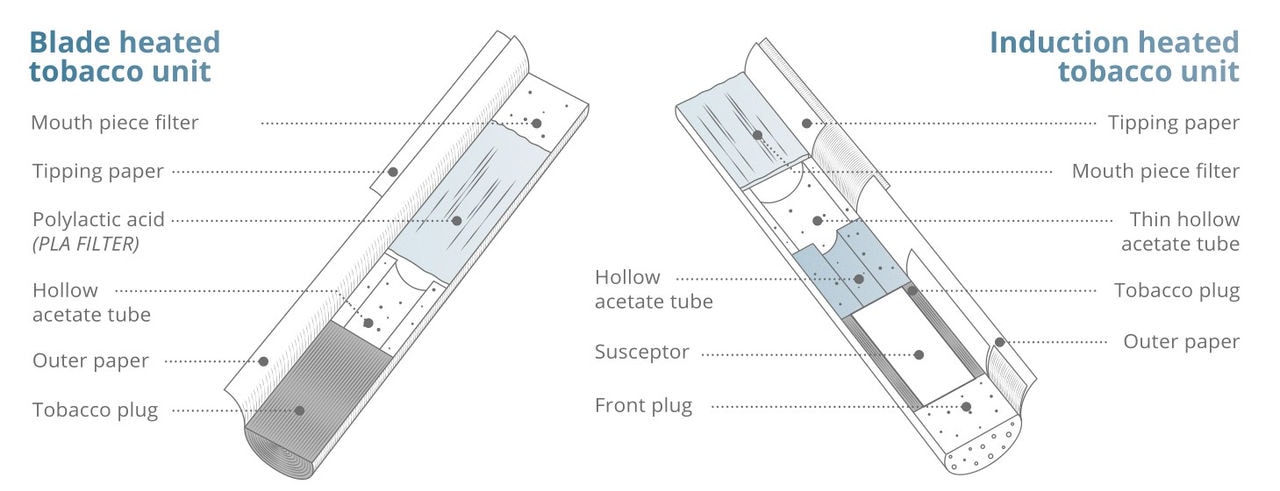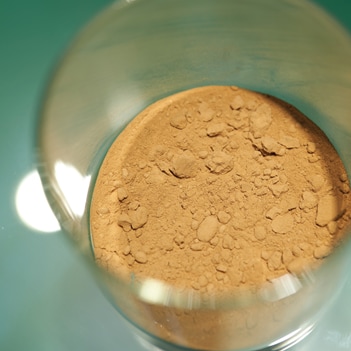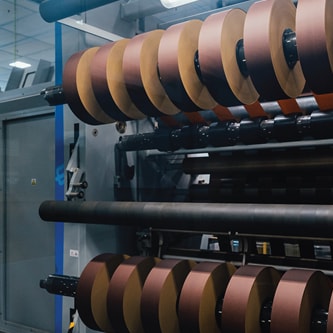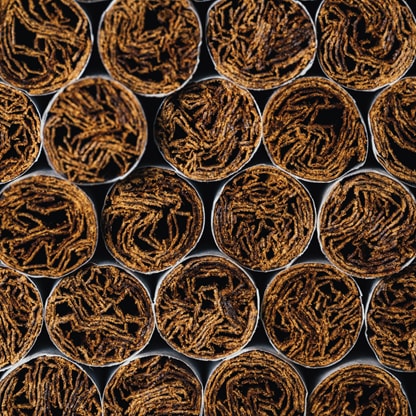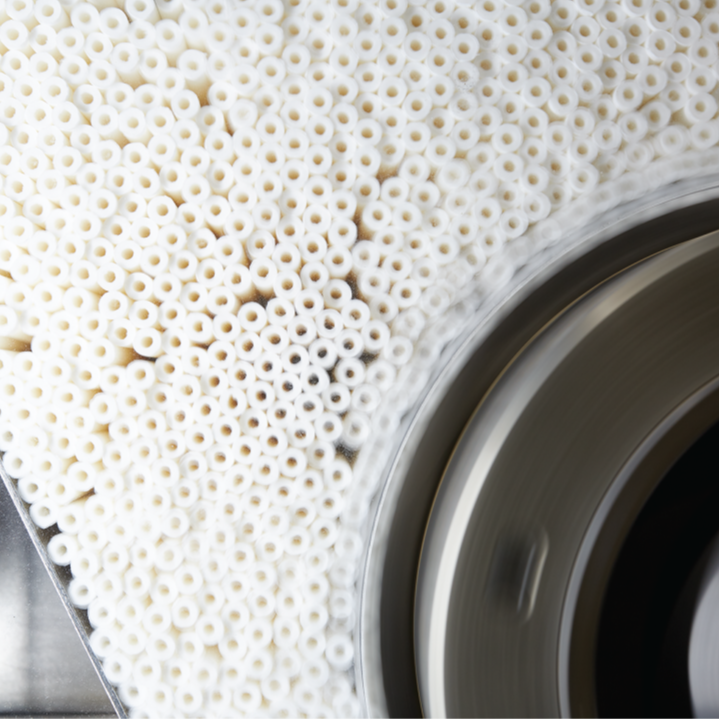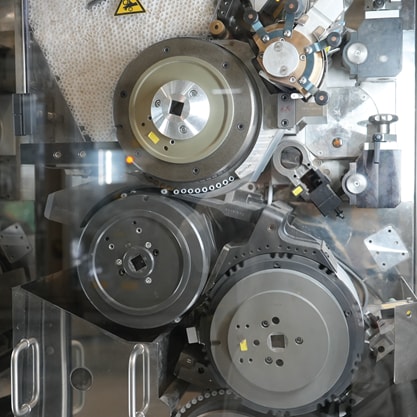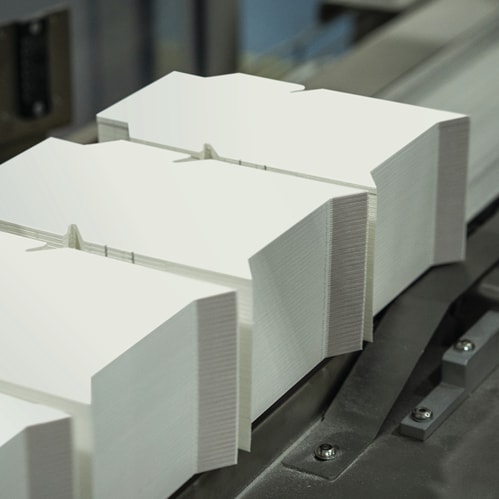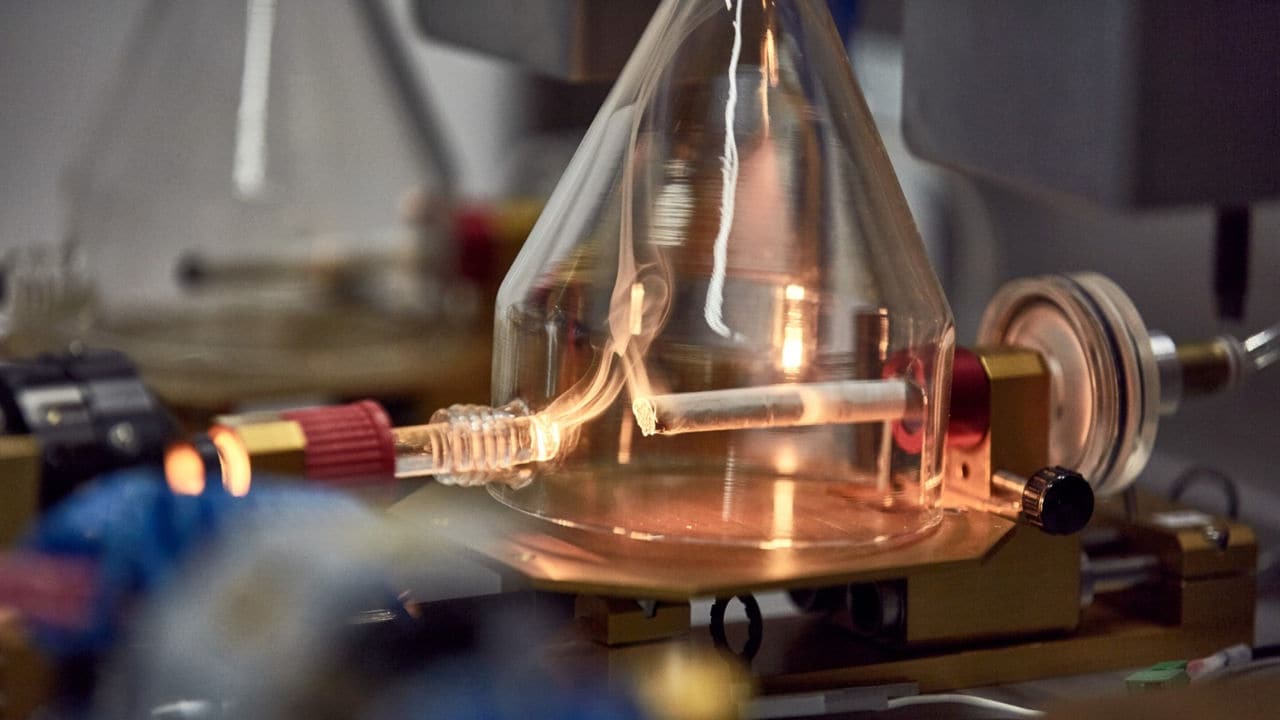The tobacco sticks in our Tobacco Heating System (THS), which is commercialized as IQOS, and in our latest heated tobacco device, the Oven Heating System (OHS), are designed to heat tobacco to release a nicotine-containing aerosol for the user to inhale, but without burning the tobacco like a cigarette does. The THS and OHS heat tobacco to significantly lower temperatures, and, therefore, unlike cigarettes, produce no fire, ash, or smoke. Because the tobacco is heated and doesn’t combust, these heated tobacco products emit 95% less harmful toxicants compared with cigarettes. However, this does not necessarily equal a 95% reduction in risk. The THS and OHS are not risk free and provide nicotine, which is addictive. The “95% less” represents the average reduction in levels of harmful chemicals from relevant internationally recognized regulatory lists, compared with the smoke of a reference cigarette. Here, we examine how the tobacco sticks, also known as heated tobacco units (HTUs), are manufactured in our HTPs.
What’s inside heated tobacco units?
HTUs include a uniquely processed tobacco plug designed for heating, not burning, and a mouthpiece filter. Other elements may include outer and mouth-end papers, a hollow acetate tube, and a polymer-film filter, depending on the type of HTU.
Blade and induction heating technology
There are two heating technologies: blade and induction, used in our THS. Initial generations use blade heating technology and are designed to be used with specific HTUs, commonly known as HEETS or heatsticks. They rely on resistive heating, and contain an electronic system, which heats the tobacco within a precisely controlled temperature range to avoid burning it. This is achieved via a heating blade. The blade also functions as a temperature monitor, allowing the THS to control the temperature of the tobacco.
For our induction THS, commercialized as IQOS ILUMA, there is no direct contact between the electronics and the heating element, which is a metal strip introduced at the center of the tobacco plug. When the specifically designed tobacco stick, called a TEREA SMARTCORE STICK™, is inside the holder and the system is turned on, an electric current flows through the coil in the holder. This current creates the magnetic field that heats the heating element inside the tobacco, which in turn heats the surrounding tobacco. In the manufacturing process, the main difference between the HEETS and TEREA HTUs is the insertion of the heating element in the tobacco plug inside the TEREA stick.
Resistive external heating with no blade
The OHS is commercialized as BONDS by IQOS. It uses resistive external heating, with no blade, via the ROUNDHEAT TOBACCO SYSTEMTM, to heat the tobacco across the external surface of the tobacco stick instead of burning it like a cigarette does. These devices use specially designed HTUs called BLENDS. The HTUs contain specially processed tobacco for heating, a filter, a front plug and a cardboard tube. The resistive heater is made of flexible polyimide, stainless steel tracks wrapped around a cylinder stainless steel tube, with an insulated thermal casing around it. The control electronics ensure the heater's temperature is controlled and provide protective monitoring to prevent overheating.
A closer look at the tobacco stick manufacturing process
The tobacco sticks are manufactured at specialized manufacturing centers. The dried tobacco leaves are processed in the Primary area of the centers, and the tobacco sticks are produced and packed in the Secondary area. The tobacco plug in the induction and blade HTUs is made from tobacco leaves, which are ground and reconstituted into tobacco sheets, called cast leaf. These sheets are then crimped and made into the tobacco stick rods. In the BLENDS HTUs, the tobacco plug is made from tobacco leaves cut into small pieces (cut filler) impregnated with glycerin. This processed tobacco is specifically formulated for heating and is not intended for smoking.
Tobacco sticks are made by blending high-quality tobacco from selected types and origins: Burley, Virginia, and Oriental. The next stage in the process is curing, which is the term used for drying tobacco, and is performed after harvesting the leaves from the field. Leaves are sorted by stalk position and quality, then packed in bales, which are evaluated by leaf buyers. Tobacco leaves then go through final processing, and the tobacco is dried, packed in cases, and shipped.
Cut filler process for OHS HTUs
The conditioning and casing application sprays water, steam, and glycerin on the tobacco leaves inside a rotary cylinder. The water and the steam soften and open the leaves, while the glycerin protects the tobacco from overheating and creates the aerosol when the tobacco stick is consumed. The leaves are then processed in the cutter machine to produce strips up to 1 mm in width. The strips are then dried at a high temperature to reach the right target of humidity.
After the drying process, additional ready-to-use tobacco components (like stems) are added to the lamina strips. Then, the flavor is sprayed on the product inside a rotary chamber to give the final taste to the substrate. Finally, the product is conveyed in a silo where it is blended to reach homogeneity. The final mix is called “cut filler” and is ready to be used in secondary processes.
Blending and grinding of tobacco leaves for induction and blade HTUs
The Blending and Grinding Line processes the tobacco leaves and transforms them into tobacco powder, which is used as a main ingredient in the cast leaf manufacturing. The tobacco powder is then mixed with four other ingredients - water, glycerin, fibers, and guar gum - to obtain a paste (slurry). Glycerin protects tobacco from overheating and creates a visual aerosol when the tobacco stick is consumed. Fibers create the tensile (strength) of the tobacco sheet, the tensile being the resistance when pulling on the cast leaf bobbin. Guar gum, a natural vegetable gum, binds all the elements together.
Cast leaf lines and bobbins for induction and blade HTUs
The slurry is cast on the steel belt with a blade at the beginning of the process, removing the excess slurry. Once the slurry has been sufficiently dried, the resulting tobacco sheet can be detached and placed onto a perforated belt. After the cast leaf comes out of the second drying zone, it is wound around a core to form a bobbin.
Crimping and tobacco rods for induction and blade HTUs
Crimping, the next step in the process, already exists in the paper making industry. The cast leaf is crimped to a specific profile while flavors are applied. Next, the cast leaf passes through a funnel and is glued to form a continuous rod. The rod will then be cut into tobacco sticks measuring 120 mm in length.
Polymer-film filter
The filter in the blade tobacco stick is used to cool down the aerosol to an acceptable temperature. It is made of polylactic acid (PLA), a biodegradable polymer-film, which is wrapped in a non-porous paper made of cellulose fibers. PLA is a thermoplastic aliphatic polyester obtained from corn starch, tapioca products (roots, chips, or starch), or sugarcane. It is used in several biomedical applications, as well as for food packaging.
The induction and OHS tobacco sticks do not include the PLA filter. This section has been replaced by a chamber in which the aerosol condenses through fresh air intake. A plug has also been added at the end of the tobacco stick to ensure the heating chamber remains clean.
Combiner
Once the rods are manufactured, they are moved to the combiner where they are cut to the expected length, and combined with the other components, such as the hollow acetate tube, cellulose-acetate mouthpiece filter, and outer and mouth-end papers. They are then wrapped and glued in the outer paper to form the tobacco stick.
Packaging process
Finally, the double tobacco sticks are cut and turned to continue as single tobacco sticks to the packer. The single tobacco sticks are sorted and enveloped in paper. Two separate compartments are formed, and an inner frame is used to reinforce both compartments. The hinge lid then envelopes the 20 tobacco sticks to form the final pack.
The best thing any adult smoker can do is to quit tobacco and nicotine altogether. However, the totality of the evidence available today from our rigorous scientific assessment program indicates that switching completely to our HTPs, while not risk free, presents less risk of harm than continued smoking.
